The sight and sound of Oyster Yawls being built on Island Wall is fast fading from the collective memory. Yet today in Whitstable Harbour you can see local Volunteers restoring a 42-foot Yawl built in 1906 and now registered as a National Historic Ship. Marine Surveyors predict that this iconic vessel will have a second working life of 60 to 80 years because of the high quality of workmanship.
The Yawl known as Gamecock was built by Collars Alley by the Collars Brothers and worked all her life in the Swale. Three generations of the family watched the Gamecock being lifted on to the East Quay where Whitstable Maritime has created a boat-building yard with the help of the Harbour Board and Bretts.
The current team of Volunteers is led by a master Shipwright trained by Alan Staley of Faversham, himself an apprentice of Anderson, Rigden & Perkins of Island Wall. The Charity is looking to have its own apprentice so that the traditional craft skills are retained in Whitstable.
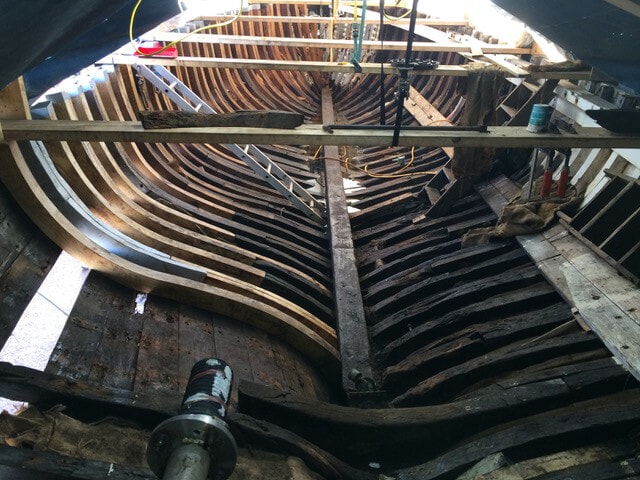
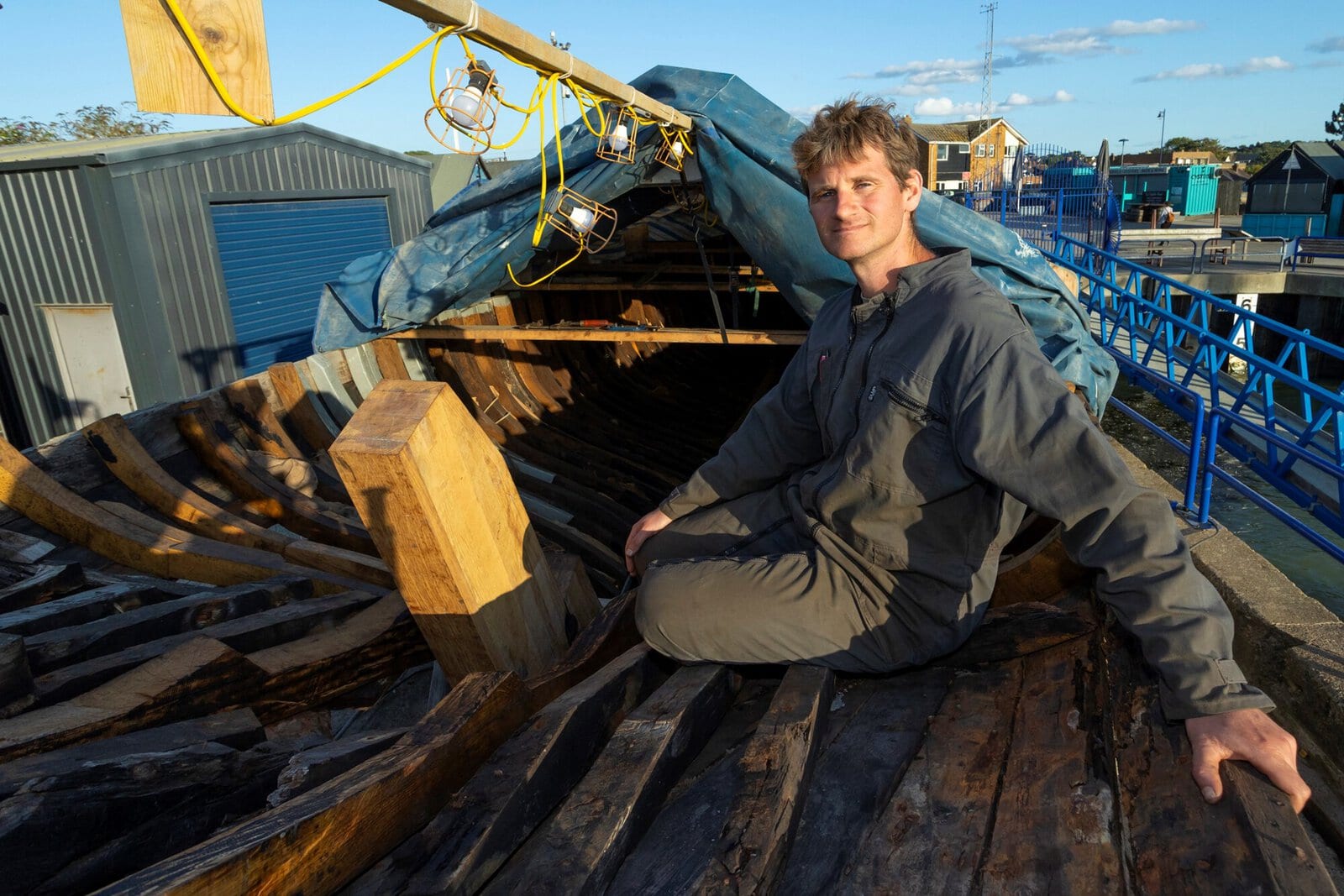
Morgan Lewis with Gamecock on the East Quay in 2013 by when the oak frame had been restored along the length of the hull. Approximately 30% of the original timber was able to be retained. Morgan gained his skills as a Shipwright with Alan Staley of Faversham who, in turn, was apprenticed to the last boat-builder on Island Wall. The protruding block of timber is the top of the new stern post built from laminated oak.
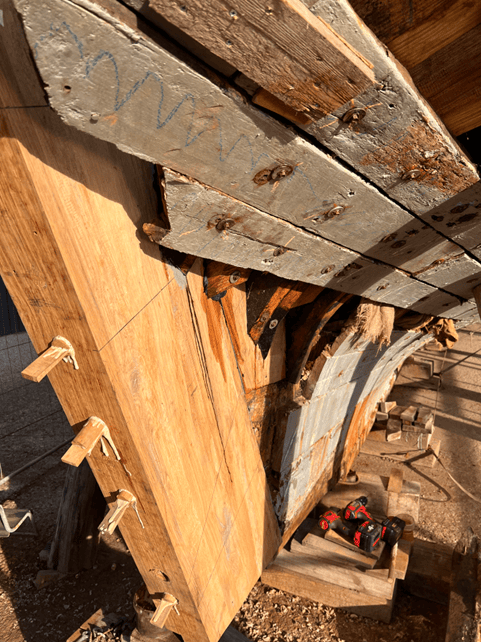
The stern post is fixed to the bottom of the hull by 4 trunnels (long wooden pegs) and modern glues. The trunnels are made by the Volunteers from pieces of oak left after the curved frames had been cut. So waste is kept to a minimum. This traditional technique gives a very strong fixture and avoids the use of metal bolts which can corrode in sea-water over time.
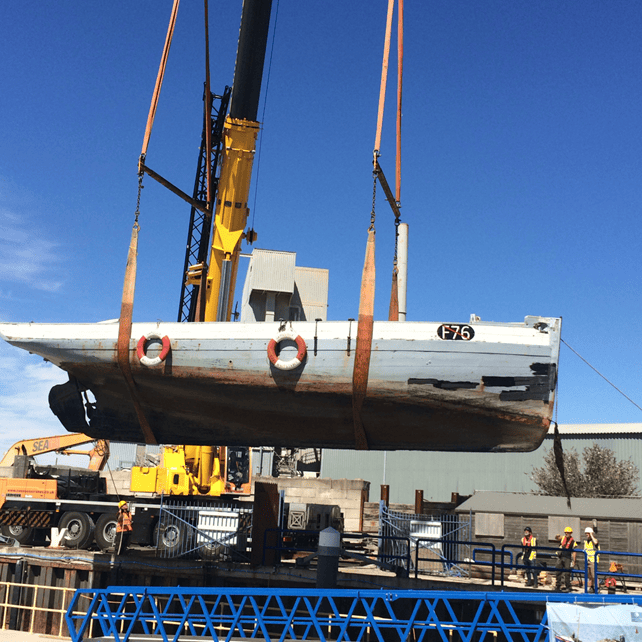
Gamecock being craned out of the water on to Whitstable Maritime’s temporary ‘boatyard’ on the East Quay of the Harbour prior to restoration. Although 43-feet long, the sleek lines of the hull help her sail well in a light wind. The counter-stern (over-hanging deck at the rear) increases the work platform and is a distinguishing feature of a Whitstable Oyster Yawl.
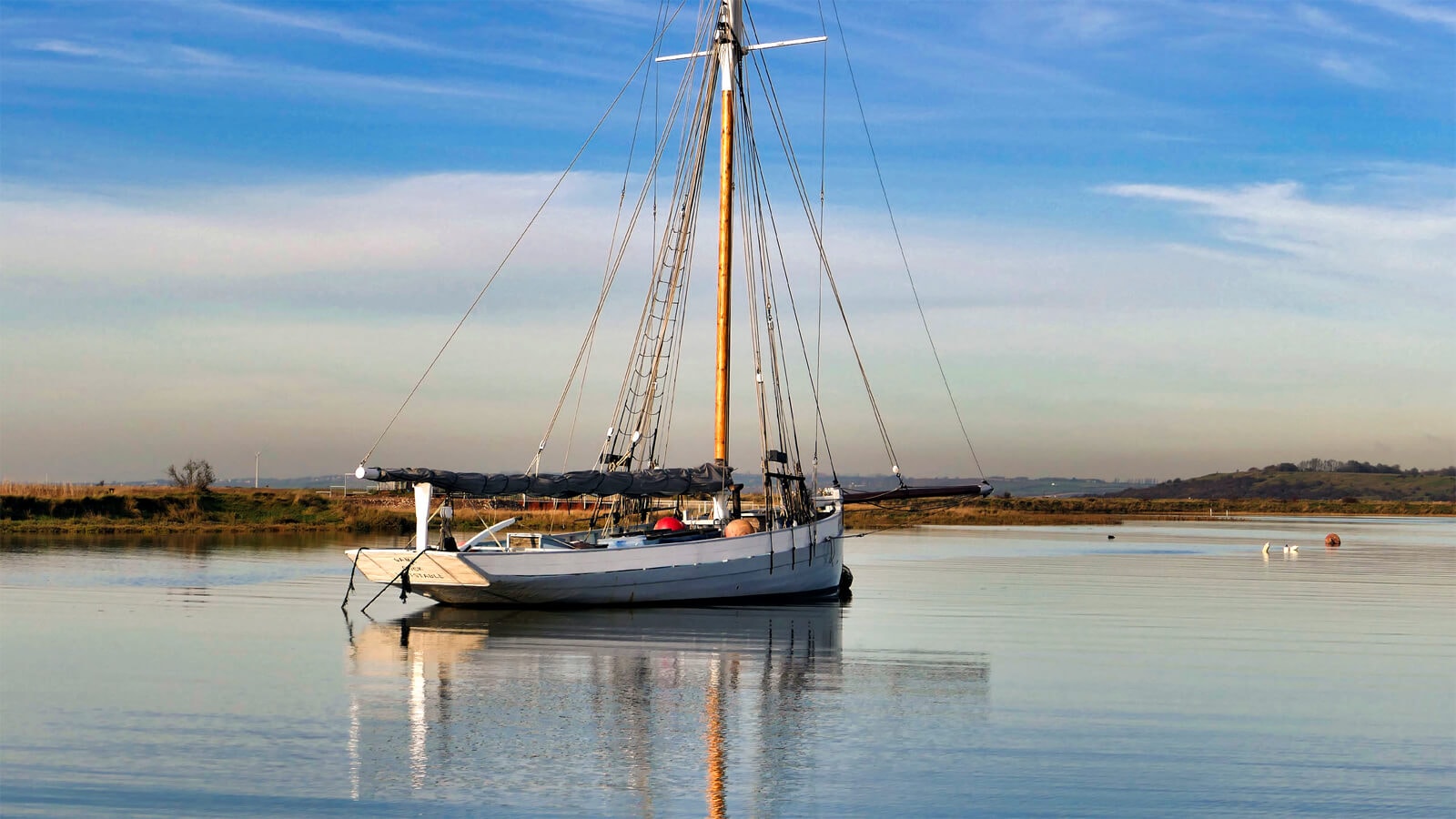
Faversham boat-owners were used to seeing the Gamecock moored at the mouth of the Oare. She was one of over 70 Whitstable Oyster Yawls that worked in the Swale.
Thanks to Whitstable Maritime, this rare craft has been saved from a watery grave and is being fully restored in Whitstable Harbour by local Volunteers. You can help thousands of local folk enjoy sailing her by donating on this website.
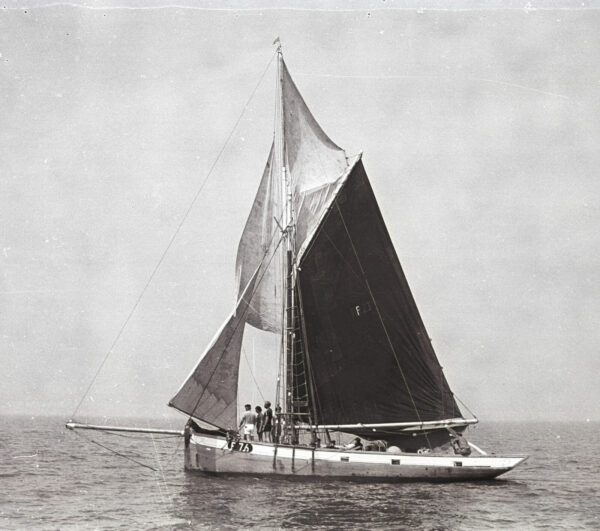
The following extract is from an article which first appeared in the Spring 2024 edition of the Whitstable Whistler and is reproduced by permission of the Editor.
Traditional Sail Training from Whitstable
Those of you following the restoration of the Gamecock will be familiar with its rescue from the mudflats of the Oare, its 18-months on a secure wet berth at Faversham, the tow to Whitstable Harbour, the stripping of the rotten timbers, and the extraction of the corroded metal. You will be an admirer of the traditional skills of the Shipwright and the determination of the local Volunteers working at the temporary boatyard in the Harbour. At the present rate of progress, with your continued financial support, the people of Whitstable will soon be able to experience sailing the iconic 1906 Oyster Yawl.
It is Spring 2026 and the 43-foot Gamecock is slicing through a Force 3 sea. You have no previous experience of sailing a large craft but are in a group of six who have been asked to help crew!
Once clear of the Harbour entrance the rhythmic sound of the waves against the hull begins to have a calming effect as the sails fill with the wind. You start to relax your grip on the wooden spars as anxieties are left on-shore. You are in a new environment, one where natural forces dominate.
As you become more confident, you will be invited to help set the sails, manage the fenders, navigate with a compass and chart, read the weather, or steer a course with the tiller. A boat like the Gamecock can be safely sailed by a trained Skipper and Mate but you will gain more from the experience if you are willing to help manage the Yawl as one of the team.
Any sailing vessel, large or small, needs continuous adjustments to maintain its direction and speed. A dinghy sailor sits so that he or she can reach all of the controls. On a sailing vessel as large as the Gamecock this is not possible so at all times the crew need to stay alert, observing colleagues and responding as one to any instructions from the Skipper. You will be dependent on each other for the task to be completed efficiently. This will become immediately apparent If heading up into the wind and need to tack which involves moving all the sails across the deck from one side to the other at the right moment.
Whether the wind is light or strong you will have a memorable experience. In a light wind you may use all of the sails and have to keep adjusting them to capture any breeze. The long bowsprit and tall mast enable the Gamecock to carry a large sail area so she is capable of moving fast even in light winds. In a strong wind you may need to help spill some of the wind from the sails to reduce the power. The stronger the wind, the more important it is that you help keep the equipment on board tidy and ready for use.
The other natural force at work is the tide which varies in strength as the seawater enters and leaves the Swale. If offered a turn on the tiller you will feel the extent to which the tide is pushing against the hull. The Oystermen used this force to their advantage. Having located the bed of oysters they would set the boat square on to the tide and drag three or four triangular wire dredges over the oysters lying on the seabed. The dredges were arranged along the length of the Yawl with the heaviest in the bow, and the lightest at the stern, to avoid them becoming entangled. Should the Skipper allow too much wind in the sail the Yawl would increase in speed and lift the dredges off the seabed: what the Oystermen called ‘swimming the dredges’.
As you watch the waves roll by you imagine what it was like to work on the Gamecock when there were over 70 similar craft dredging in the Swale. You are gaining in self-confidence and becoming more self-reliant. As the Skipper shouts ‘Ready About’, the team moves efficiently to the task: you are a member of a crew. Perhaps one day you will wish to train as a Mate and help others enjoy a similar experience.
Traditional sail-training on a large vessel is widely acknowledged as an effective means of developing personal qualities such as self-reliance, responsibility, teamwork, and leadership. It can also benefit those with mental, social, or physical challenges. So an aim is to develop customised sailing programmes at a charitable rate with local groups who support youngsters and adults with particular social, health, or educational needs.

